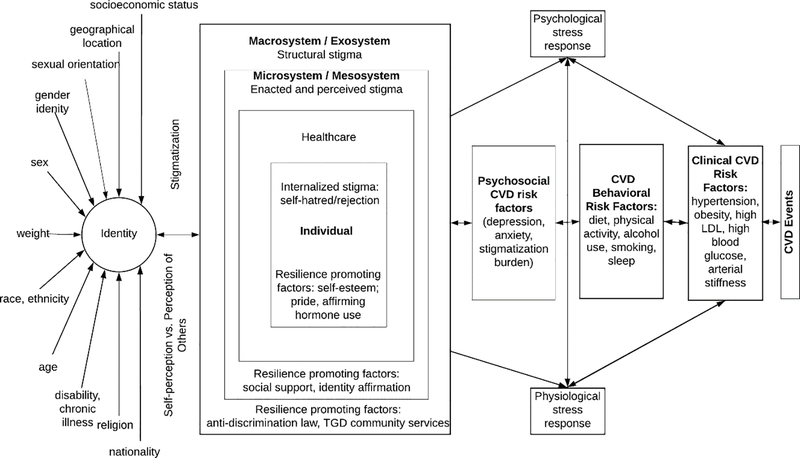Figure 2.
The Intersectional Transgender Multilevel Minority Stress model reframes and expands the scope of minority stress theory to include an explicit intersectional lens and to clarify the role of multilevel socioecological factors on the health of TGD populations. In brief, marginalization on the basis of intersecting socialized identities is depicted as leading to a degree of stigmatization in relation to social power systems. Stigma-related stressors are depicted dynamically in relation to resilience promoting factors, which are theorized to combat the harmful effects of stigma and thereby offer potential points for future multilevel health equity promotion interventions. When stigmatization rather than resilience is the dominant effect in the model, the resulting net effect of intersectional stigmatization contributes to poor population health via 1) psychological distress, 2) CVD behavioral risk factors, and 3) physiological response to chronic stress. These pathways independently contribute to clinical CVD risk factors and outcomes. They also add to the higher chronic stress burden associated with the development of clinical CVD risk factors and ultimately CVD and CVD disparities among marginalized populations, including TGD persons.

